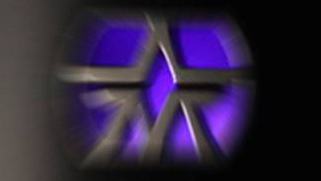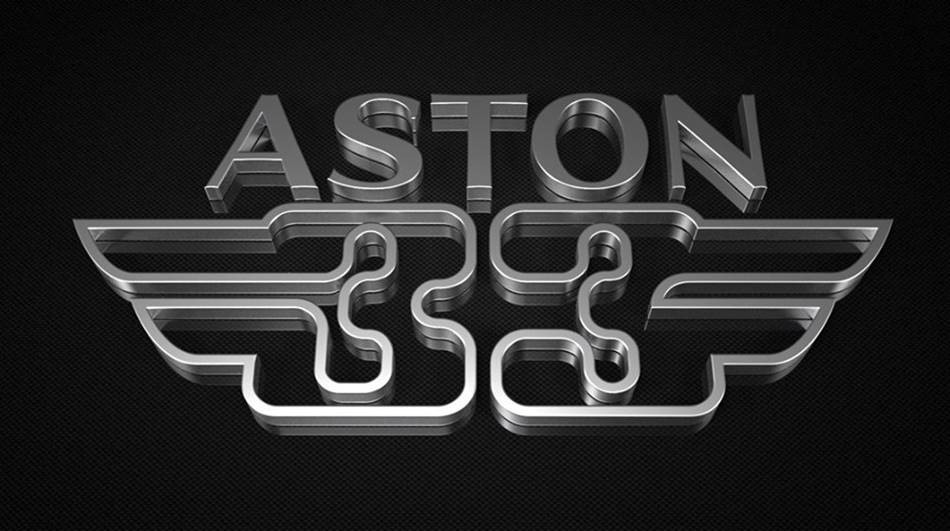Elementary my dear Aston: how one pro audio company is asking you to shape its new product…
Fancy becoming a product designer for a pro audio company? Here's how…

Aston Microphones has embarked on a massive project to get thousands of producers to help it shape the sound of its new Element microphone, and you too can be a part of this quite extraordinary listening panel. We sit down with Aston founder James Young, who explains this most ambitious of plans…
Aston's latest project comes with ambitions that overshadow anything that it has achieved so far
For such a young company, Aston Microphones has already made a big impact with its first four microphones: Origin, Spirit, Starlight and Stealth. All four combine very different looks with a unique sound and innovative features, and all four have won awards, including the NAMM 2020 Best Microphone TEC Award for Stealth.
However, the company's latest project comes with ambitions that overshadow anything that it has achieved so far. Aston has always employed a panel of expert producers, artists and engineers to mould the sound of its microphones, but its next microphone, Element, will be shaped by the biggest listening panel to date, as the company is hoping to enlist some 10,000 producers to be a part of it.
You can get involved as well, which we'll detail later, but first some background on the Aston story.
• The best microphones for recording: instruments, vocals and podcasts
Aston starting
James Young, Phil Smith and Alan Gavin started Aston Microphones in 2015 after being largely responsible for the sE microphone brand to take root with their company Sonic Distribution. But this time around, they had a completely different focus for their new mic brand.
“We had to deconstruct the microphone science that was out there."
James Young, CEO, Aston Mics
“There wasn't a microphone manufactured in the UK, aside from the odd-and-sods things like 1970s Calrec mics and Coles which were made out of the BBC,” James Young explains. “They exist as part of an engineering company and not a mic brand in the wider sense, so nobody had done it before. We thought, 'we can be the first guys to be the first mic voice of the UK'. That was a big driver for us and to do UK manufacturing.”
Want all the hottest music and gear news, reviews, deals, features and more, direct to your inbox? Sign up here.
As well as the UK-centric nature of the company, and the reduced carbon footprint that local manufacturing brings with it, Aston's focus was also to deliver microphones in the £200-£300 range.
“In order to do that we had to deconstruct the microphone science that was out there,” James reveals. “We looked at hundreds of different mic products and found that they were all basically made the same way, and that all the OEM companies were copies of copies.
"We worked out that if we tried to do something that was just a moulded chassis and standard headstock, we'd end up with the cheaper stuff being OEM and the more expensive stuff at Neumann prices. So that was what drove us to get Jack Munro involved in the architectural design and effectively come up with a new way of doing everything.”
Jack is the son of the iconic acoustic designer Andy Munro, but as James says, he was able to look at Aston's microphone designs with more of an architect's eye, bringing some leftfield thinking to the table, including mesh head designs that incorporated pop shields, and other innovations that led to big savings on components. Importantly, he also helped the resulting range of Aston Microphones – the Spirit, Origin, Starlight and Stealth – look very different from most other microphones out there. But there was one other important aspect that Young had to deal with: their sound.
“In the same way that we had our backs against the wall with the pricing and chassis design,” he explains, “so we had the same problem in terms of the actual audio design. We had people that could do structural stuff and people who could do electronics, but we only had ourselves as a listening group. But when we split with sE microphones, I made a hundred or so calls to various producers and engineers to let them know what happened, and all of them said 'well, if there's anything I can do to help out…'.
"It suddenly dawned on me that we could bridge that gap in our listening ability by getting these people involved, so I phoned a bunch of them back and said 'hey, how about we do some blind listening tests?' [for the first Spirit and Origin mics] and that's where the Aston 33 panel (or A33) came from. It expanded to something like 67 people for the Starlight mic and 120 people for Stealth.”

The expert panel is presented with a set of audio files – male vocal, female vocal, guitar and so on – that are recorded with different microphones, and then the various producers and engineers are asked which recordings they prefer. Aston use the data to home in on a particular sound and then customise their microphones accordingly.
“Most of the testing is with different versions of our own microphone,” James explains, “and what we do is throw other market-leading mics into the test without telling people the details. In the case of Stealth, for example, we had a Shure SM7B microphone that you'd expect it to go up against, but also a Rode NT1 and Neumann U87 in the test. That's simply to ask, 'well how would our mics fare against top-selling condensers?'. So we mix it up but we don't ever tell people what they are listening to.”
Both Origin and Spirit were the first results and and then the Starlight came out with different settings, thanks to the listening test process. “That was because when we did the initial testing to see what people liked, it was completely polarised. One group said, 'we like the vintage sound' and the other said 'modern and punchy'.
"They were literally polar opposites so that's why we adapted the Starlight to have multiple voices on it. The same with Stealth. We tested lots of different instruments for Stealth as we knew it needed to be very functional, but we were getting very different results for male and female vocals, strings and so on, so we said 'well ok, let's put four different settings on it'.”
It's Elementary

Which brings us neatly up to date with the company's latest microphone, Element. What's different with this microphone is that James and the Aston team are opening up the listening test to anyone with a decent monitoring setup. And as to the microphone itself…
What's different with this microphone is that James and the Aston team are opening up the listening test to anyone with a decent monitoring setup
“It's a side-fire, large diaphragm, cardioid pattern studio microphone,” James carefully details. “The reason I steered away from saying it's a 'condenser' is that it has proprietary technology in terms of the capsule. It could be classified as a condenser sound – and condensers are what it will be up against in terms of the tonal quality – but actually it's an active moving coil microphone which you might think makes it a dynamic, but it's not really that either!”
In fact the mic is phantom powered, as sensitive as a condenser microphone and designed as a studio solution, but Aston have designed it to be very robust, with exceptional ambient rejection, so Element will be equally at home in live vocal applications.
“It is essentially a studio microphone, but people will absolutely be able to use it live, like they would an SM7B but with much broader dynamic range and detailed transient response. We've contoured the sound to make it sit with the sound that people want from a condenser, but it is anything but!”
And that sound isn't quite there yet; the rest of its sonic character will be determined by the biggest Aston panel yet, which you can be a part of; in fact Aston is targeting as many as 10,000 producers to be part of the panel that shapes the Element sound. The process itself is pretty easy, as James explains.
“You download 15 files: five guitars, five female vocals and five male vocals. You then decide the order which you like best and drag the file names up in a voting order, one to five, and simply submit them for the three stages. You can change your votes at any time.
"The whole idea is for us to see the comments on the initial sound and which of the competitors they like best. We're not going to copy anything, but it will allow us to mould our sound and the tonal qualities of the mics they like into the infrastructure of our capsule.”
“What will happen in round 1 is that we will work out where we have to make improvements and where people want it to be. In round 2 we are expecting people to like the sound of our mic and for it to be in the top one or two. And then in round 3, we will present different impressions of our mic and will ask: 'which of these do you like best?' so it will home in on the perfect sound to bring to market.”
And before you ask, what's in it for you should you choose to take part?
“The main incentive is that they'll be given the status of an Aston Family developer,” James replies. “Even the really big producers and engineers love being part of the Aston 33 panel – they feel part of the family, like they are actually helping to design the product. And anyone who votes on this genuinely is helping to design the sound of a new product.
"So the actual status is one thing but along with that comes the proof, and they'll get a certificate from us to say they are an official Aston Microphones developer, a digital media pack, limited edition stickers and a bunch of stuff to say they're a creator. Finally, there will also be an exclusive offer so that they can preorder the microphone at 25% off the listed price.”
The first round of voting on the Element sound finishes on May 15th and the second round starts June 1st when further details of the mic and future voting will also be announced.
You can join in at any time by registering at www.astonmics.com.

Andy has been writing about music production and technology for 30 years having started out on Music Technology magazine back in 1992. He has edited the magazines Future Music, Keyboard Review, MusicTech and Computer Music, which he helped launch back in 1998. He owns way too many synthesizers.
